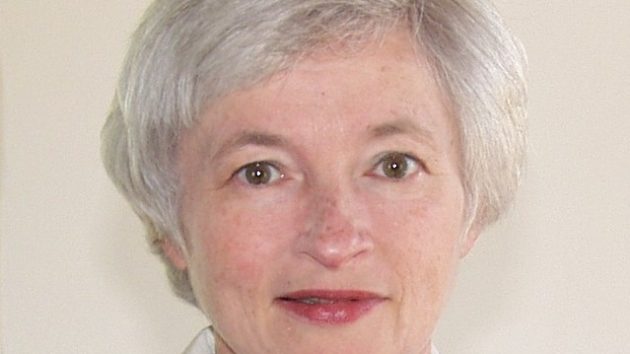Yellen: I Helped Blow Up The World
The most-destructive terrorists do not use guns or bombs. They use their power and influence to lie in public, backed by force of law, destroying people, industry and even entire nations and their governments. They are found in the halls of finance, and the more-powerful they are the worse they are. Today, the head of same is found in the Federal Reserve, seated before Congress in the form of ChairSatan Janet Yellen.
First, let me acknowledge the important contributions of Chairman Bernanke. His leadership helped make our economy and financial system stronger and ensured that the Federal Reserve is transparent and accountable. I pledge to continue that work.
Uh huh. The man who first claimed subprime is contained, who in fact invented and promoted the policies that led to the housing bubble in the first place (people seem to forget that) and then who invented and promoted the policies that have now led to the largest global asset bubble in history (second only to the one he built first, and which exploded in his face.)
The unemployment rate has fallen nearly a percentage point since the middle of last year and 1-1/2 percentage points since the beginning of the current asset purchase program. Nevertheless, the recovery in the labor market is far from complete.
There has been no recovery in employment rate of the population. At all.
Since anyone driven from the workforce by Fed policy doesn’t count as “unemployed” Yellen’s statement is akin to arguing that the natural death rate has not gotten worse over time which may well be true but if you’re shooting people by the busload there are still more people dying — and you’re responsible for their deaths.
Among the major components of GDP, household and business spending growth stepped up during the second half of last year.
Uh huh. All of it borrowed, I might add. Median household income adjusted for inflation is not rising. Therefore all of this increased spending must be borrowed money, which is not an improvement in the common man’s situation.
The same is true with businesses; they never saw their indebtedness decrease — not even in the depths of the recession.
We have been watching closely the recent volatility in global financial markets. Our sense is that at this stage these developments do not pose a substantial risk to the U.S. economic outlook.
The Fed caused that volatility.
Our current program of asset purchases began in September 2012 amid signs that the recovery was weakening and progress in the labor market had slowed.
There has been no recovery. Not in inflation-adjusted incomes nor in the employment rate of the population. Neither has improved one iota since 2009. Borrowing more money is not an “improvement” as incomes must rise net-net to service the new debt. They haven’t.
The Committee has emphasized that a highly accommodative policy will remain appropriate for a considerable time after asset purchases end.
Of course you have. The government is blowing more money than it takes in too, and you know full well that this can’t continue forever either, but you won’t take the candy away from the baby – even when told, point-blank as Bernanke was on multiple occasions over the last few years, that Congress is incapable of rational fiscal management on its own without being forced to do so by market-based borrowing costs.
Regulatory and supervisory actions, including those that are leading to substantial increases in capital and liquidity in the banking sector, are making our financial system more resilient. Still, important tasks lie ahead. In the near term, we expect to finalize the rules implementing enhanced prudential standards mandated by section 165 of the Dodd-Frank Wall Street Reform and Consumer Protection Act. We also are working to finalize the proposed rule strengthening the leverage ratio standards for U.S.-based, systemically important global banks. We expect to issue proposals for a risk-based capital surcharge for those banks as well as for a long-term debt requirement to help ensure that these organizations can be resolved. In addition, we are working to advance proposals on margins for noncleared derivatives, consistent with a new global framework, and are evaluating possible measures to address financial stability risks associated with short-term wholesale funding. We will continue to monitor for emerging risks, including watching carefully to see if the regulatory reforms work as intended.
This is the biggest lie of all.
Derivatives are nothing other than a scam intended to get around margin requirements that would otherwise be imposed by the market in the absence of government bailouts and guarantees. The “financial system” has repeatedly demonstrated that it has both, with the most-outrageous example of same being when Paulson and Bernanke literally corralled Congresspeople into a room and threatened them with economic nuclear winter if they didn’t get a $700 billion blank check.
That “need” came about due to The Fed and Congressional willful blindness toward the outright fraudulent declarations of “adequate” margin supervision and reserves against said positions. What 2008 laid bare on the table was that these claims were outright lies, that is, public frauds, and yet none were either prosecuted nor were the firms that had made such outrageous and false statements allowed to fail, with only a couple of exceptions.
The fundamental reality is that The Fed believes, despite decades of proof otherwise, that it can successfully “manage” the business cycle and continually pump up asset bubbles without consequence. The problem with such an assertion is that every time The Fed has done this to date throughout history the balloon has found a pin and popped with dramatic consequence, and what’s worse, the severity of those excursions in terms of real-world economic impact has risen with each successive attempt and failure.


